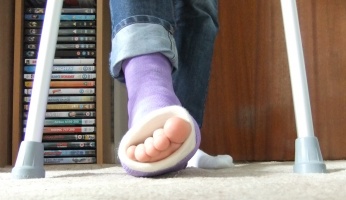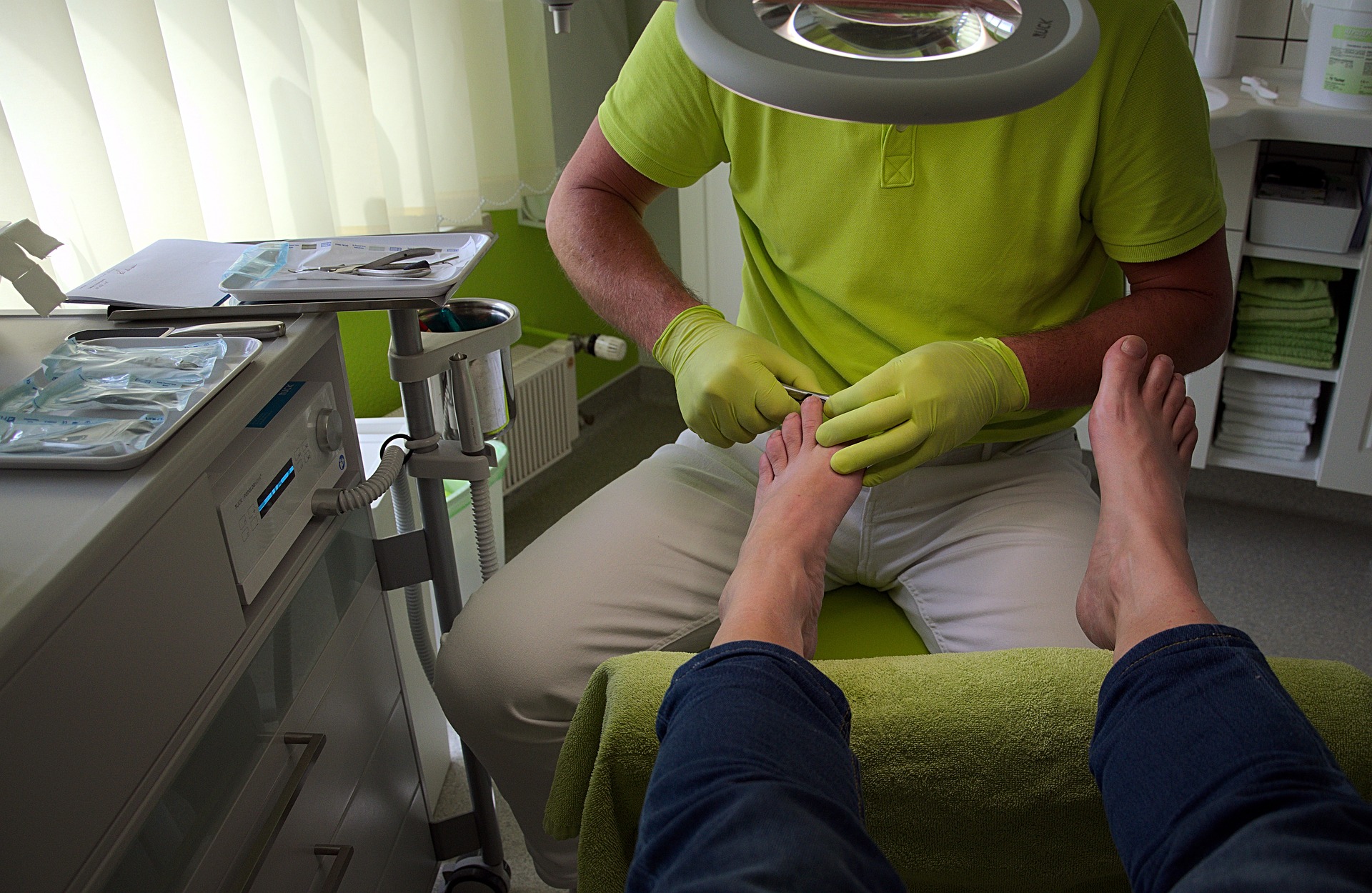Recognizing Sepsis and Staph Infections After Foot Surgery
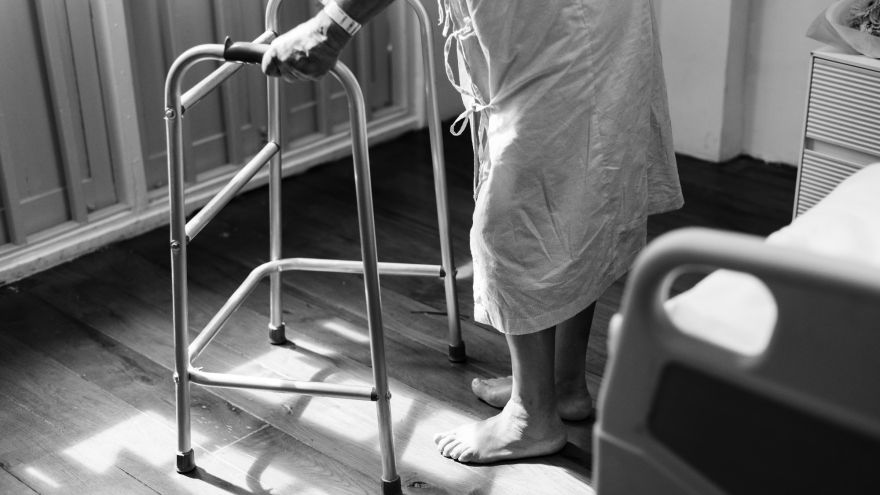 Recognizing Sepsis and Staph Infections After Foot Surgery www.walkjogrun.net
Recognizing Sepsis and Staph Infections After Foot Surgery www.walkjogrun.net When a person undergoes surgery, the body becomes vulnerable to infection usually through the incision site. Even when the proper steps have been taken; dressing changes wound cleaning, and antibiotics, a post-surgical condition known as a staph infection can invade the surgical site and eventually lead to a life-threatening disease called sepsis. These conditions are very serious, contagious, and in some cases drug-resistant. If you, or someone you know, is planning to have a surgical procedure sometime in the future, or you are presently recovering from surgery, it is advisable to know the visible signs and symptoms of a staph infection.
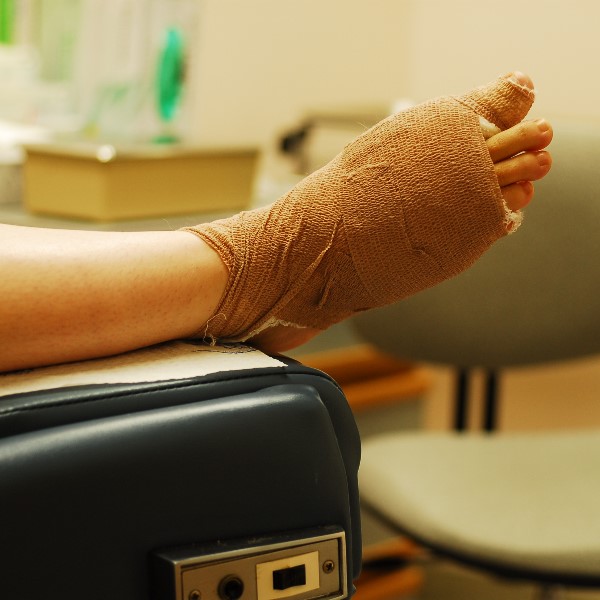
Staph Infections: Overview, Signs, and Symptoms
Remember the letters MRSA. Methicillin-Resistant Staphylococcus Aureus (MRSA) is a contagious infection caused by a type of bacteria known as staph. It is resistant to many different antibiotics. These bacteria are normally found living in the nose and on the skin and generally do not cause any harm. However, when they begin multiplying uncontrollably, a MRSA infection can occur. The chances of contracting a staph infection increases when there’s a cut or break in the skin. As the infection progresses, sepsis may develop and is considered a potentially life-threatening complication.
Sepsis occurs when the antibodies in the bloodstream start fighting the infection triggering inflammatory responses throughout the body. It is important to know where a person was originally exposed to the Staph bacteria and just as important to understand that there are different types of Staph out there in the world. The following steps will help you identify the what and where of the staph infection:
Step #1: What are the Various Types of MRSA and how are they classified?
Hospital-acquired (HA-MRSA) –
Hospital-acquired staph infections are contracted in hospitals, nursing homes, and medical facilities. It spreads throughout a hospital, for example, through direct contact. This could happen if doctor or nurse is treating an infected wound or transmission with contaminated hands. Patients, as well as medical personnel, may become infected by touching surgical instruments that have not been thoroughly sterilized or coming in contact with linens previously used by infected patients. HA-MRSA may develop into pneumonia and various blood infections.
Community-acquired (CA-MRSA) –
CA-MRSA is primarily related to infections that are transmitted by means of close personal contact with an infected person or by coming in direct contact with an infected wound. MRSA infections of this type may also develop due to poor personal hygiene, such as improper or infrequent handwashing.
Step #2: Learn to Recognize the Symptoms of MRSA
- If you’ve been exposed to HA-MRSA, your chances of developing serious medical conditions like pneumonia, urinary tract infections, and sepsis greatly increase. It’s important to seek medical attention immediately if you notice one or more of the following symptoms:
- Skin rash
- Muscle aches
- Fever and/or chills
- Headaches
- Fatigue
- Coughing
- Shortness of breath
- Chest pain
Step #3: What are the Symptoms of CA-MRSA
- CA-MRSA is usually the cause of skin infections. Certain areas of the body that have an abundance of body hair, such as the armpits, are more likely to get infected. Any serious trauma resulting in skin damage such as scrapes, cuts, or scratches will also make you vulnerable to infection. Symptoms include:
- A bump on the skin that is swollen and painful resembling a spider bite or a pimple.
- In most cases, the pimple has a white or yellow center and a central head on it.
- The bump may be surrounded by warmth and appear red in color, commonly referred to as cellulitis.
- In some cases, the patient may run a fever.
- The presence of fluids such as pus draining from the infected area.
Step #4: People Who May be at Risk of Developing MRSA
- Risk factors will vary depending on the specific type of MRSA infection the person was exposed to, however; the following lists may help in identifying any new or questionable skin problems:
- You’re at an increased risk for HA-MRSA if you:
- were hospitalized for any reason within the past three months
- undergo hemodialysis on a regular basis
- have an immune system deficiency due to another medical condition
- live or work in a nursing home
- You’re at an increased risk for CA-MRSA if you:
- share exercise equipment, razors, or towels with other people
- participate in contact sports or provide laundry services for athletes
- work at a children’s daycare facility
- live in overcrowded or unsanitary conditions
- You’re at an increased risk for HA-MRSA if you:
Step #5: Diagnosing MRSA
- Diagnosis begins with a patient’s personal medical history assessment followed by a physical examination. Samples will also be taken from the incision, trauma, or site of infection. The types of samples that are needed to help in diagnosing MRSA include the following:
- Wound site cultures which are then taken and are checked for staph bacteria.
- Sputum cultures are as important as the wound site cultures are. Sputum is the substance produced by the respiratory tract during coughing.
- In most cases, a sterile urine culture is needed and is obtained from a “midstream clean catch” urine specimen.
- A blood culture can determine whether the infection has progressed from staph to sepsis. It will require a small sample of blood which is then placed in a Petri dish in a laboratory and allowed to grow any bacteria that may be present within it. Results from blood cultures are usually known in about 48 hours. A positive test result may indicate sepsis, a type of blood infection. Bacteria can enter the blood from infections located in various parts of the body, such as the lungs, urinary tract, and bones
Step #6: Recommended Treatment for Both Types of MRSA
- HA-MRSA infections are extremely serious and have the capability of producing severely painful as well as life-threatening infections. These types of infections usually require antibiotics administered through an IV, often for extended periods of time depending on how severe the infection is.
- CA-MRSA infections will usually show signs of improvement when treated exclusively with oral antibiotics. If you are suffering from a larger skin infection, your doctor may choose to perform a procedure requiring an incision in order to facilitate drainage. This procedure is usually performed during an office visit under local anesthesia. It will also involve a scalpel to incise the area of infection so it can drain completely. Antibiotics may not be necessary if the drainage procedure is successful.
- Patients diagnosed with HA-MRSA are typically placed in isolation on a temporary basis until the infection subsides. Isolation helps prevent the spread of this type of MRSA infection as fewer people will come in contact with the exposed person. Any hospital personnel caring for or coming in contact with a person diagnosed with MRSA must follow strict handwashing procedures. To further reduce the risk of contracting MRSA, hospital staff and all visitors should wear protective clothing and gloves to prevent contact with any surfaces which may be contaminated. Any surfaces, objects or linens which may have been contaminated should be properly disinfected on a regular basis.

- EO Botanical Hand Soap
-
Our rating - Non GMO
- Price: See Here


- Puracy Natural Foaming Hand Soap
-
Our rating - Leaves No Residue
- Price: See Here


- Mrs. Meyer´s Clean Day Hand Soap
-
Our rating - Contains Essential Oils
- Price: See Here

Recommendations:
Okay. It’s time for everybody to wake up and pay attention because this is serious stuff. We’re talking about a very terrible and contagious infection that could not only hurt you but your entire family. As always, the best thing you can do in preventing contamination is washing your hands-not just once, but throughout the day. So many of the germs we pick up are transmitted through the things and people we touch. Public restrooms, day care facilities, schools, door knobs-it’s endless, but they’re all breeding grounds for disease. When you don’t have access to soap and water, hand sanitizer will do just fine, carry it with you and share it with a friend when necessary. If you have an obvious wound, even if you’re not sure what it is, keep it covered until it’s healed. A gauze bandage can prevent pus or other fluids which might contain staph bacteria from infecting others who might touch the same objects or surfaces as you. Remember, personal items should remain personal. Never share or ask someone to share their towel, bedding, shaving razors or athletic equipment-it’s just too risky. Keep up with your laundry and sanitize your linens. In the event you have cuts or broken skin, use a little extra bleach on your clothes and wash in hot water. Get in the habit of washing your gym and athletic clothes as well as your bed linens and bath towels and dry everything on high heat-it sounds urgent because it is!

The Sepsis Syndrome
It’s Time You Knew
Sepsis is the body’s extreme and overwhelming response to an infection. Your body’s immune system sends an army of chemicals into your bloodstream to fight the threat. The body responds with widespread inflammation which, over time, can slow the flow of blood and damage your internal organs. Occasionally, sepsis can be life-threatening, especially when left untreated or it progresses to later stages or septic shock. It’s important to seek medical treatment immediately if you suspect you have it. Here are some of the symptoms and the steps you should take in diagnosing sepsis:
Step #1: Know the Symptoms
If you have contracted sepsis, you already have a serious infection. Early symptoms include fever and feeling unwell, faint, weak, or confused. You may notice your heart rate and breathing are faster than usual. If it’s not treated, sepsis can harm your organs, make it hard to breathe, give you diarrhea and nausea, and cause confused thinking.
- S: Shivering, fever, or very cold
- E: Extreme pain or general discomfort
- P: Pale or discolored skin
- S: Sleepy, difficult to motivate, confusion, disorientation
- I: “I feel like I could die”
- S: Shortness of breath
Step #2: Those Most Vulnerable to Sepsis?
Sepsis is most commonly diagnosed amongst the elderly, those persons with long-term illness (like diabetes or cancer), babies under 3 months of age and people with weakened immune systems. It is mandatory that you be cared for in a hospital so that you receive proper treatment. Additional factors in diagnosing sepsis are listed below:
- When you have an infection it may cause an immune system response. This response could affect your organs which is why it can become deadly. Fortunately, most infections don’t lead to sepsis.
- There are groups of people who have a higher risk of developing sepsis as they are at higher risk of contracting various infections. These include the very old, the very young, those suffering with chronic diseases, and those with weakened or impaired immune systems.
- Sepsis can occur during pregnancy. It is rare, but it can develop during or shortly after the baby is born. Infections can spread from the bacteria that grow within the birth canal during pregnancy. It can also start from an infection that occurred during vaginal delivery, cesarean sections, or abortions.
- People can become vulnerable to sepsis when they have open sores, suffer wounds or have been burned. When your skin is damaged or torn, bacteria can invade the area and start an infection. A serious burn covering a large area is capable of stimulating the immune system to work overtime.

- Viva Naturals Premium Vitamin C
-
Our rating - Non GMO
- Price: See Here


- Vitafusion Power C
-
Our rating - Great Taste
- Price: See Here


- Emergen-C
-
Our rating - Vitamin C + Antioxidents
- Price: See Here

Recommendations:
Most people have experienced their fair share of cuts, burns, and bruises and have healed quickly and completely. However, if you think your healing is taking too long or, it just doesn’t look or feel right, get it checked out as soon as possible.
- What’s the Difference Between Sepsis and Septic Shock?
- Going from Bad to Worse
A doctor will not diagnose a patient with sepsis on the basis of infection alone. Patients are only diagnosed with sepsis after developing the specific signs and symptoms related to sepsis. If you experience one or more of the symptoms of sepsis, accompanied by signs of an infection or, you fall into one of the high-risk groups, your doctor may likely suspect sepsis. A physician will follow these steps in diagnosing sepsis: - Step #1: How Sepsis Progresses
- When the body starts to display signs beyond the symptom stage the progression of the disease may result in:
- Signs of organ problems
- Difficulty breathing
- Minimal output of urine (kidneys shut down)
- Abnormal results from tests on the liver (indicating liver damage)
- Changes in mental state
- Most patients diagnosed with severe sepsis will require extensive treatment in an intensive care unit (ICU).
- When a patient’s blood pressure continuously drops to life-threatening levels it is another indication of a septic shock diagnosis.
- When the body starts to display signs beyond the symptom stage the progression of the disease may result in:
- Going from Bad to Worse
Recommendations:
Septic shock is the most severe and life-threatening stage of sepsis. The patient’s blood pressure drops so low that the heart and circulatory system start shutting down and begin to fail. The result is inadequate blood supply to the body’s organs, and they can’t do their job of keeping the patient alive. This is one critical situation that must be attended to by a profession hospital staff. Expect to be admitted to the hospital’s Intensive Care Unit to get the care you need on a 24-hour basis.
Diagnosing Sepsis
Communication is Key
The good news is, people with sepsis can expect to fully recover, though after exposure a person may be more likely to get infected with it again. Whether the effects are long lasting will depend in part on your age, your general health, whether you currently have a long-term disease, or how quickly you received treatment for sepsis.
Step #1: Help Your Doctor – Help Yourself
- To make an accurate diagnosis of sepsis, your physician will need to ask a lot of questions and examine you carefully. Here are a few questions you will have to answer:
- Do you currently have or been running a fever?
- Do you know your normal heart rate or, noticed any changes in your pulse?
- Have you started breathing rapidly, showing signs of shortness of breath?
- Are you able to think clearly? Have you experienced confusion?
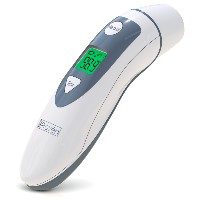
- iProven DMT-489
-
Our rating - Dual Function
- Price: See Here


- Metene Infared Thermometer
-
Our rating - No Contact Necessary
- Price: See Here

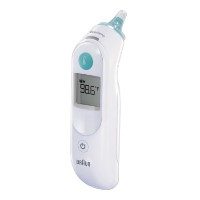
- Braun ThermoScan 5
-
Our rating - Accurate Pre-Warmed Tip
- Price: See Here

Recommendations:
People just seem to know something is wrong when certain symptoms show up. The problem is that so often they go away by themselves. If you start experiencing any of the above symptoms on a regular basis, start keeping track of them. Writing a short note to yourself could help your doctor make an accurate diagnosis if things start getting out of control and you lose your concentration. Memory loss won’t make this any easier. Be agreeable to your screening tests which may include drawing blood, urinalysis, chest x-ray, or CT scan. Remember this: you do not have the luxury of putting a sepsis diagnosis off for too long, the sooner you begin treatment the more likely you are to survive.
This is Everybody’s Problem
Sepsis was officially declared as the number one, most expensive in-patient cost in American hospitals in 2014, estimated at nearly $27 billion per year. As many as 40% of patients who are diagnosed with severe sepsis do not survive the disease. Up to 50% of severe sepsis survivors suffer from post-sepsis syndrome. There is currently no cure for sepsis so, until a cure is found, early detection is the best hope for survival and limiting post disease disability for sepsis survivors. Here are a few steps you can take in helping beat the consequences of sepsis:
Step #1:
Staph & Sepsis in a Nutshell
- The best way to learn the differences between staph and sepsis is to keep it simple. They are not the same but, one can lead to the other. Follow the clues to a better understanding:
- Sepsis is a general term that refers to a specific infection in the blood.
- MRSA (Methicillin-resistant Staphylococcus aureus) is a specific infection caused when a staph infection is present.
- MRSA can lead to sepsis, but sepsis is not always the result of MRSA.
Recommendations:
Stop smoking now. Smokers are much more prone to infections during their recovery from surgery. As a matter of fact, studies have been done proving that smokers are close to being six times more likely to contract an infection than a person who does not smoke. People who smoke cigarettes, cigars and chew tobacco also have more scarring, scar tissue and heal more slowly. The longer it takes your incision to close, the longer you put yourself at risk for an infection in that area. Because scarring is so much worse in smokers, some plastic surgeons test for nicotine prior to operating on their patients. In some cases, testing positive for nicotine may prevent the surgery from taking place.
Conclusion:
Because of the seriousness of these conditions, many organizations have formed in order to further study, provide comprehensive education, and hopefully find a cure for them. To learn more about these terribly debilitating and contagious diseases or to find out more about some of the organizations check the links below. Take care and live your best life in good health!
Sources:
- https://www.mayoclinic.org/diseases-conditions/staph-infections/symptoms-causes/syc-20356221
- https://www.webmd.com/a-to-z-guides/ss/slideshow-sepsis-101
- https://www.healthline.com/health/mrsa#diagnosis
- https://www.verywell.com/signs-and-symptoms-of-an-infection-3156917 Signs and Symptoms of an Infection After Surgery Jennifer Whitlock, RN, MSN, FN January 28, 2018
- https://www.sepsis.org/sepsis/definition/
- https://answers.yahoo.com/question/index?qid=20090129110525AAlOaTE
- https://rorystauntonfoundationforsepsis.org
- https://www.sepsis.org
- https://www.christopherreeve.org/…/secondary-conditions/sepsishttps://canadiansepsisfoundation.ca
- https://www.facebook.com/sepsisalliancehttps://cmajblogs.com/tag/canadian-sepsis-foundationhttps://sepsistrust.org







